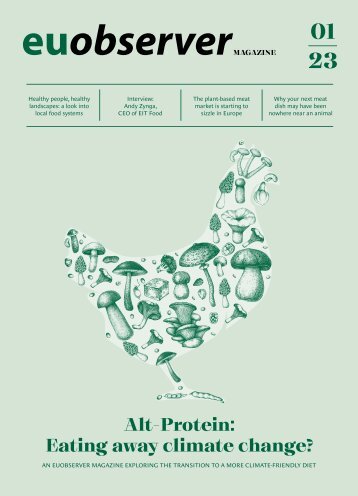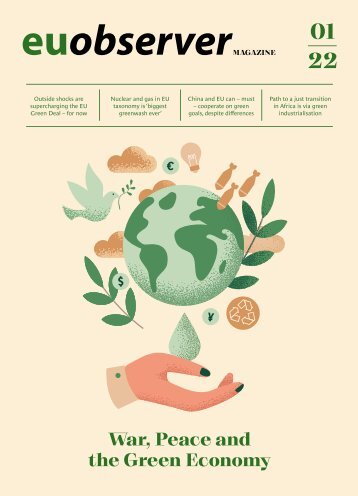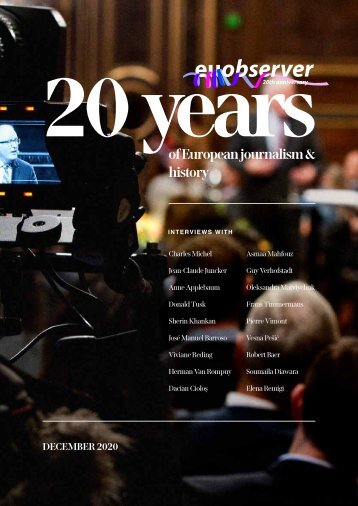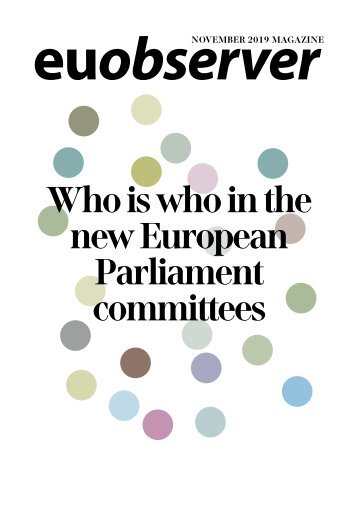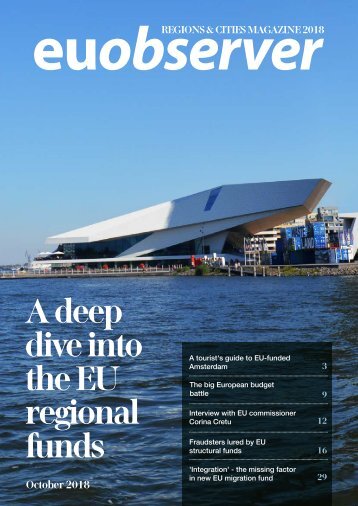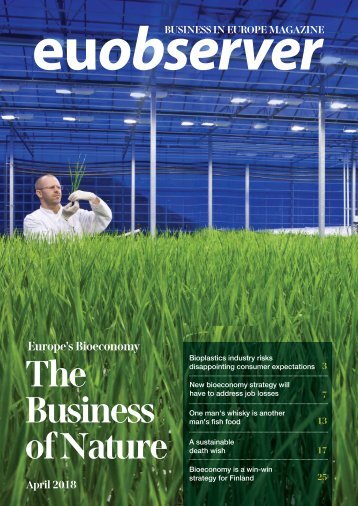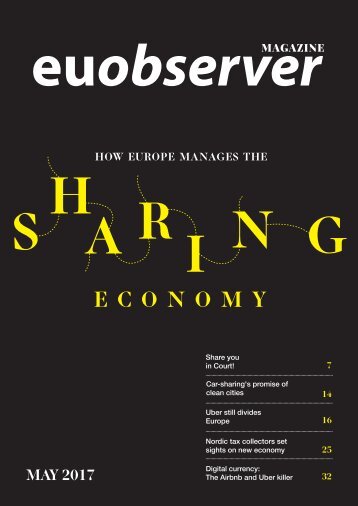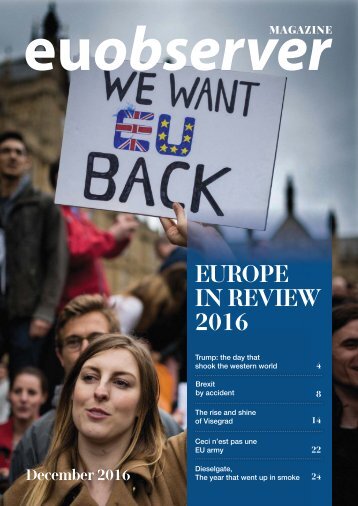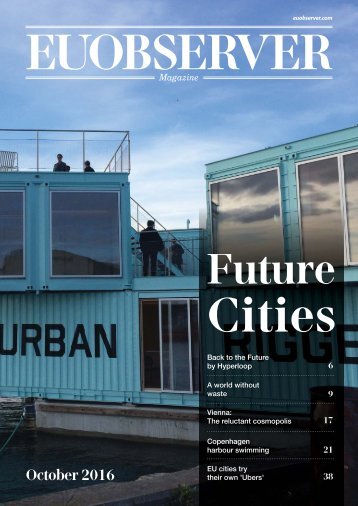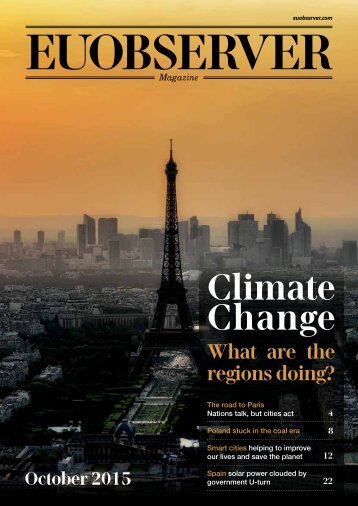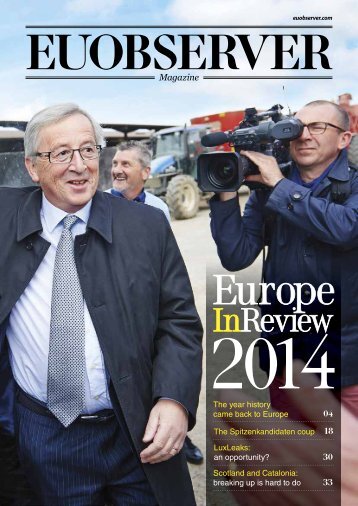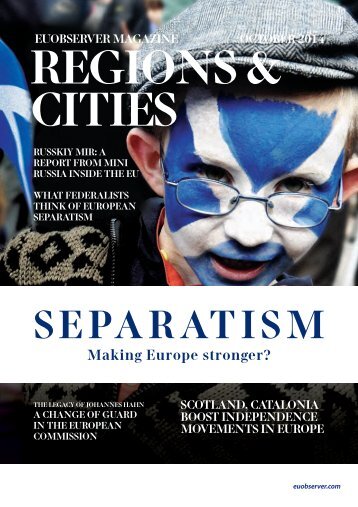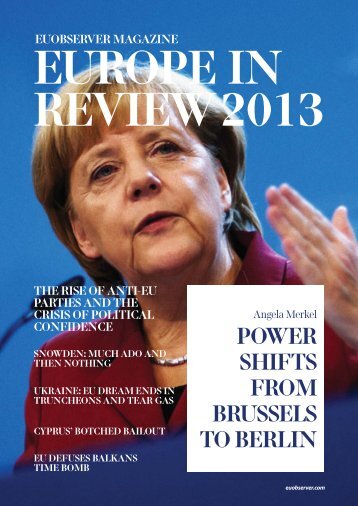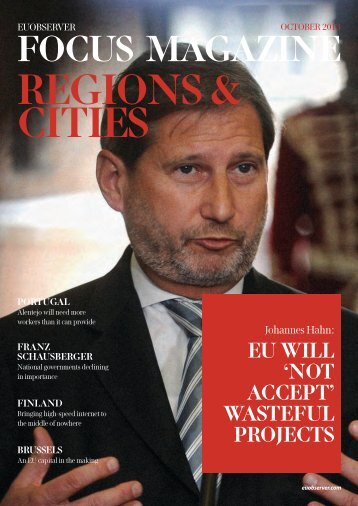Future Cities: Shaping Europe from the bottom up
- Text
- Regions
- Union
- Change
- Energy
- Housing
- Innovation
- City
- London
- Vienna
- Copenhagen
- Environment
- Europe
- Cities
- Hyperloop
- Cities
- Euobserver
20 worldwide. When it
20 worldwide. When it comes to liveability rankings, Brussels languishes in the bottom half of most So what can be done to make Brussels better serve the needs of its people and to make it a worthy capital of the EU? MISSING VISION Firstly, Brussels needs an ambitious vision for the future that has the backing of politicians at all levels and people from all communities. Just as Barcelona was transformed, largely for the choked city of 1.2 million into a more liveable capital provoking book by Pascal Smet, the minister for mobility and public works. PUT PEOPLE FIRST Secondly, Brussels needs a transport policy that have brought large sections of the city to a standstill. entering the centre of the city. This would help halt suburban sprawl in Wallonia and Flanders, encourage the 250,000 people who drive into the city every day to live in it instead commuters to use the regional train network. The federal government also needs to scrap its generous subsidies for company cars, which account for half of all new cars bought. The saved money should be used to build a new metro line to the south of the city and create more dedicated cycle paths and car-free lines for all trams. laid down 64km of tramlines since 2000, so there is no reason why Brussels cannot. To dissuade car drivers from entering the city centre, almost all roads inside the inner ring road should be pedestrianised. Brussels used to be known for its and a statue of a but was suddenly world’s media as a Photo: wikipedia 34 — FUTURE CITIES OCTOBER 2016
Photo: John and Melanie (Illingworth) Kotsopoulos in Europe after Venice. prettiest car-parks - and the packed, narrow lanes around Place St Gery. ARCHITECTURAL JEWELS architectural jewels. However, many are inaccessible. If cities like Prague, Florence and Paris can provide monuments that double as breathtaking viewing platforms, why is it not possible to go to the top of the gold-encrusted Palais de Justice dome - which has been covered in scaffolding since the early 1990s - or Place? And why should visitors only be allowed into the royal a year, and to the royal greenhouses at Laeken only two weeks a year? ATOMIUM IS OLD NEWS Thirdly, as well as opening up old buildings, Brussels ambitions, inspire tourists to visit and put the city on the world map. In the last 25 years, Spain alone has given the Guggenheim museum in Bilbao and another Frank In Brussels, the last interesting building to be erected was the Atomium. That was in 1958. FREE WIFI Fourth and last, city authorities could help make Brussels more dynamic and competitive, cutting its shameful, 20-percent unemployment rate in the process. spaces - as in San Francisco - allow Sunday shopping on all Sundays, not just once a month, shop in the centre. FUTURE CITIES OCTOBER 2016 —
- Page 1 and 2: euobserver.com Magazine Future Citi
- Page 3 and 4: STUDENT VILLAGES ON THE WATER Stude
- Page 5 and 6: studio residences are created which
- Page 7 and 8: from Helsinki to Stockholm in half
- Page 9 and 10: A world without waste A garbage cri
- Page 11 and 12: A Swedish incineration worker watch
- Page 13 and 14: Thames. London School of Economics
- Page 15 and 16: for instance, women with access to
- Page 17 and 18: Thanks to government-funded acco
- Page 19 and 20: RICH IN CULTURE AND MONEY These sur
- Page 21 and 22: Copenhagen harbour swimming Copenha
- Page 23 and 24: streams of small told EUobserve
- Page 25 and 26: WHY DON'T WE JUST DO IT? "It was
- Page 27 and 28: is now London's concentrated in on
- Page 29 and 30: © AER REVITALISING DEMOCRACY ACTIN
- Page 31 and 32: Last year, the mayor of Sellia, an
- Page 33: In Brussels, the last interestingin
- Page 37 and 38: Culture. Photo: Lisbeth Kirk beer,
- Page 39 and 40: in the summer of 2009. Photo: Windw
Inappropriate
Loading...
Mail this publication
Loading...
Embed
Loading...

